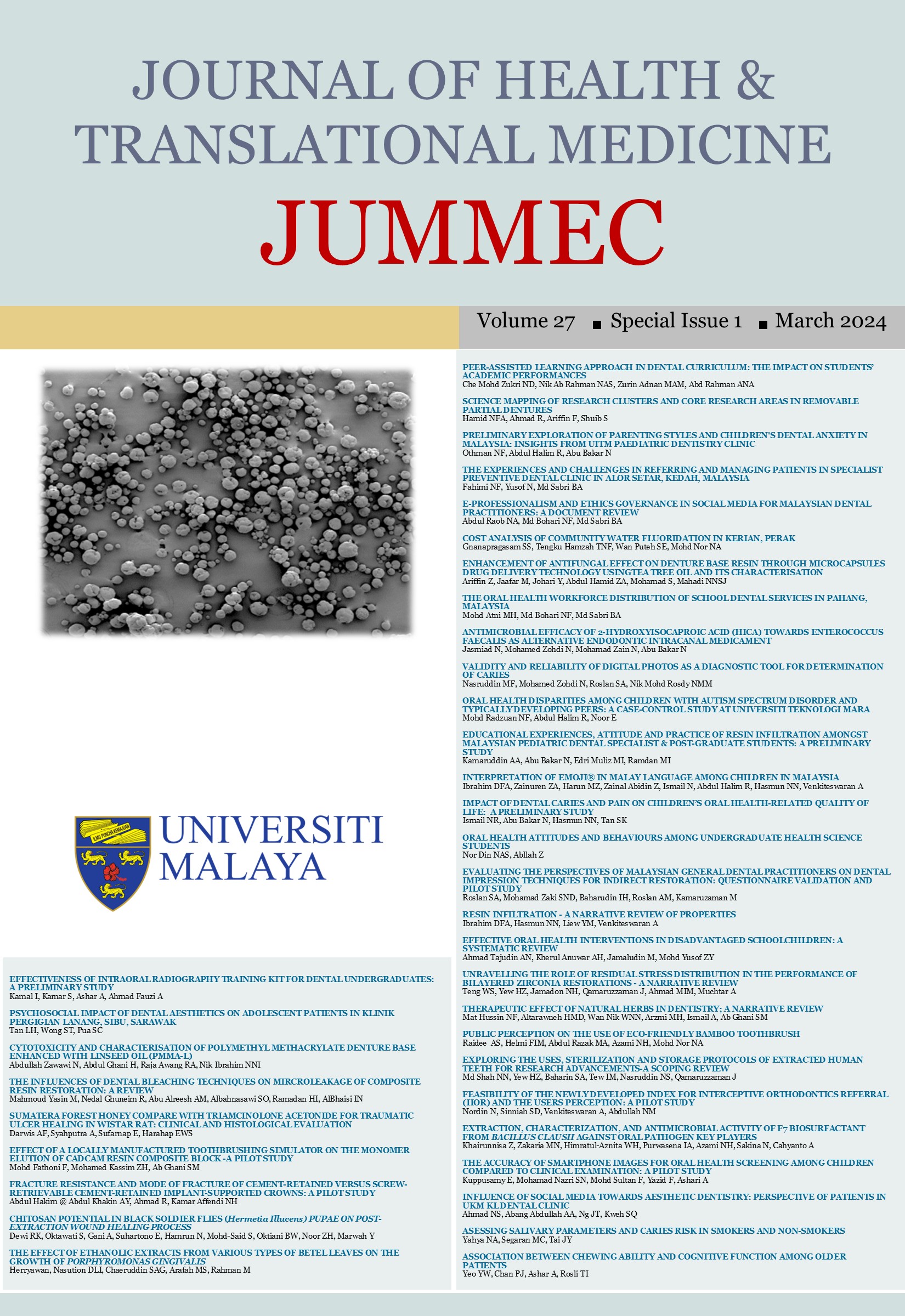VALIDITY AND RELIABILITY OF DIGITAL PHOTOS AS A DIAGNOSTIC TOOL FOR DETERMINATION OF CARIES
Received 2024-02-19; Accepted 2024-03-26; Published 2024-03-27
DOI:
https://doi.org/10.22452/jummec.sp2024no1.10Abstract
Objectives: The impact of COVID-19 on dental care and the adoption of tele-dentistry for caries detection needs investigating. The pandemic led to the use of digital photography, including DSLR cameras and smartphones, for remote dental operations. Literature suggests that use of digital images was found to enhance caries detection sensitivity compared to visual examination. The study aims were 1) to compare the reliability of visual inspection and digital photographs for caries diagnosis among dental clinicians and 2) to compare diagnostic tools of determination of caries between full ICDAS codes and modified ICDAS codes utilization.
Methods: The research involved 45 postgraduate dental students examining 45 extracted permanent teeth using full ICDAS scores and modified ICDAS scores in three phases (Full Visual ICDAS, Digital ICDAS and Combination of Visual and Digital ICDAS). Kappa scores, sensitivity, specificity and Area Under the Curve (AUC) readings between participants answers and benchmark answers were determined.
Results: Statistical analysis revealed that introducing digital images reduced inter-rater agreement, however modified ICDAS codes utilization showed comparable results between visual and digital methods. Intra-rater agreement for visual and modified ICDAS was high, while digital images showed moderate agreement. Sensitivity for caries detection was around 93% for visual and digital methods, and specificity ranged from 67% to 80%. The AUC values indicated good performance (0.89) for both full and modified ICDAS with visual examination and lower values for digital examination (0.81-0.82).
Discussion: Results were consistent with prior studies however this research highlights video/image efficacy, emphasizing validity, reliability, and improved clinician planning using modified ICDAS.
Conclusion: Use of digital photographs for caries diagnosis were promising and the use of modified ICDAS codes were comparable to conventional use of full ICDAS codes. Overall, the study demonstrated the potential benefits of digital methods in dental caries diagnosis and tele-dentistry practices.
Downloads
Downloads
Published
Issue
Section
License
All authors agree that the article, if editorially accepted for publication, shall be licensed under the Creative Commons Attribution License 4.0 to allow others to freely access, copy and use research provided the author is correctly attributed, unless otherwise stated. All articles are available online without charge or other barriers to access. However, anyone wishing to reproduce large quantities of an article (250+) should inform the publisher. Any opinion expressed in the articles are those of the authors and do not reflect that of the University of Malaya, 50603 Kuala Lumpur, Malaysia.


